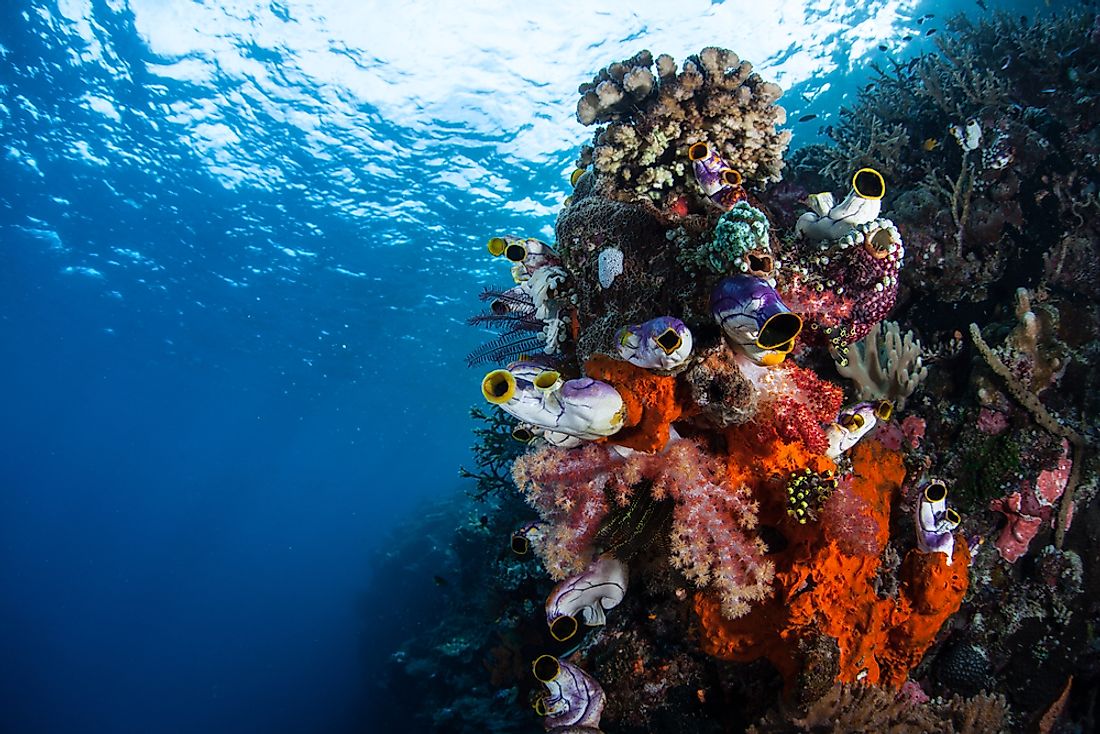Where is the Coral Triangle?

The Coral Triangle is a marine area in the Western Pacific Ocean in Asia. It consists of waters from Timor Leste, Malaysia, Indonesia, the Philippines, Solomon Islands, and Papua New Guinea. There are over 600 different types of reef-building corals that inhabit the Coral Triangle. The many coral reefs are the source of its name.
Geographical Area
The Coral Triangle constitutes portions of two biogeographical regions. These regions are the Far Southwest Pacific Region and the Indonesian-Philippines Region. The Coral Triangle, nicknamed “the Amazon of the seas” covers an area of approximately 2,200,000 square miles of the ocean water. The region generates over $3 billion in tourism revenue annually. Hence, it is a highly valued conservation area globally.
Biodiversity
The Coral Triangle has six out of the world’s seven marine turtle species. The triangle also has over two thousand species of reef fish and large populations of tuna. The tuna have a significant commercial contribution to the world's multi-billion dollar tuna industry. The Coral Triangle is home to over six hundred species of marine life. Some of the marine lives inhabiting it include dugongs, whales, dolphins, whale sharks and tuna. Sea turtles also live in the Coral Triangle. Furthermore, the Coral Triangle has the largest mangrove forests extension in the world. Besides the fauna and flora in the Coral Triangle, it is also a habitation for over 120 million individuals. These people depend on the coral reefs for food, income, and protection from heavy ocean storms. The existing extraordinary environmental conditions and the variety of the range of habitats preserve the biodiversity of the Coral Triangle.
Threats
The poor management of the Coral Triangle marine area puts the natural productivity and the marine life at risk. Climate change, high market demands of the rare species, and lack of political will are other factors that threaten the existence of the triangle. Also, the coral reefs in the triangle are experiencing massive coral bleaching which may lead to degrading of the Coral Triangle’s ecosystem. Market supplies are also at risk in case of reduction of the population of species such as the tuna. 10% of the local inhabitants of the Coral Triangle are fishermen. They depend on fishing activities to make a living. The people risk their survival in their area by the lack of knowledge on sustainable and current methods of fishing. Hence, the threats experienced at the Coral Triangle are not only a risk to the tourism and economic sectors but also the livelihood of its human inhabitants.
Conservation
For the survival of the Coral Triangle, conservation partners and governments in the area need to work together to develop sustainable solutions. As a result, there have been high-level conservation efforts driven by organizations such as World Wide Fund for Nature, the Nature Conservancy, USAID, Global Environmental Facility, and governments in the area. As a result, there are protected areas in the Coral Triangle. Some of the protected places include Solomon Islands, Kimbe Bay and the Bismarck Sea, the Raja Ampat Islands, and Wakatobi National Park.











